Whenever a video appears depicting a fatal crash—and given the profusion of cameras, that’s as often as once a week–we have an AVweb internal debate. Should we publish it? We’re right to have this debate, but lately, the terms of it have shifted from “should we publish it?” to “is there a good reason we shouldn’t?” YouTube has both fostered the availability of these videos and forced the discussion to the negative option.
Also multiplying are web channels devoted to the mayhem the authors know will attract clicks. Some are just car-wreck voyeurism, some attempt legitimate accident deconstruction and some are in between, but most rush to be first because they know, as we do, that being first snags the search engine and drives the most views that are the digital equivalent of crack cocaine. Restraint is not in evidence because if the other guy has it, why shouldn’t we?
That’s the context for publishing the fatal crash of Dale “Snort” Snodgrass’s Marchetti SM.1019B on July 24. This video should be difficult to watch for all of us but more so because so many people knew Snodgrass from having served with him in the U.S. Navy or working with him in some of the many jet airshows he flew during his career. That’s how I knew him, from an interview we did at Sun ‘n Fun in 2010 when he was flying the Paris jet for that show. You can tell from his answers that he was a perceptive and thoughtful aviator.
Not evident from that short video is that we talked for more than an hour. I had arrived early to rig the airplane with a camera so we had plenty of time to chat. Snodgrass came of age as an F-14 pilot during the 1980s and at a time when then Secretary of the Navy John Lehman had proposed his controversial northern strategy. The idea was to send a carrier battle group into the Norwegian or Barents Seas to bottle up the Soviet Northern Fleet. It pushed the limits of carrier operations to the breaking point and Snodgrass told me the worst experience he had in the that part of the world was flying 13 passes to get an F-14 trapped on a heaving deck. He affected no bravado about it. It was scary and he said as much.
He was well positioned and experienced to understand the risks of aviation broadly and specifically flying vintage jets in airshows. So it’s natural, upon seeing the video, to think if it can happen to him, it can happen to anyone. While that’s certainly true, upon seeing the video, my immediate takeaway was more pedestrian than that. It was a reminder about pre-takeoff control checks. To be clear, I am not speculating that this is what happened here because we lack the necessary data to draw any conclusion. This accident could have been caused by several things we can imagine and maybe some we can’t.
What I am saying is that this reminds me of one of a dozen or more accident reports I’ve read in which a gust lock left in place or some other control impingement caused loss of control immediately after takeoff. Some of these were fatal, but, mercifully, most were not. Some caused the rapid pitch up you see in this video, some didn’t. All of them bent or destroyed airplanes.
Having been steeped in so many accident reports, I’m religious about certain things, including sumping the fuel for water, using the full runway length and control checks. In the Cub, I always do it at the same point, when climbing into the aircraft after I’ve pulled the right wheel chock.
One thing that got me into that habit was another video that appeared after this 1992 fatal accident of a DHC-4 Caribou that crashed immediately after takeoff. The three-person crew was conducting a test flight and the Canadian TSB said the gust lock system may have engaged after takeoff, but it also said it was unlikely the crew did a control check. So, the two videos taken together are a reminder not to forget this basic critical preflight check, regardless of what caused the Snodgrass crash. If airing them saves another crash or two or three, then that justifies the unavoidably macabre nature of the subject matter.
One other thing occurred to me. If, after takeoff, you suddenly encounter uncommanded pitch-up that you can’t control, what can you do? If it’s a control lock in place, most of the pitch-up moment will be coming from the engine’s thrust vector. Get rid of it and quick. Reducing throttle if not chopping it entirely will lower the pitch and although the airplane will likely land hard on the remaining runway, that would be far more survivable than climbing to a couple of hundred feet and suffering the inevitable noseover and high-energy crash.
It would take superhuman fast thinking and discipline to instantly decide you’re going to throw the airplane away so you can at least survive the incident. Frankly, I doubt if I’m capable of it. Which is why I’ll hope to avoid trying by doing the control check in the first place.








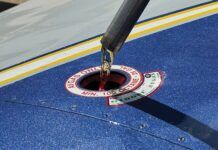
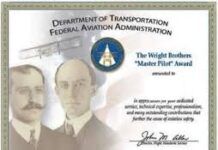
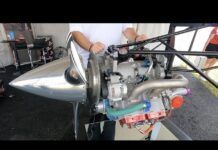
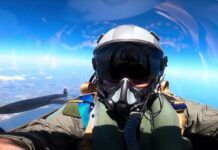



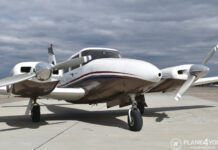


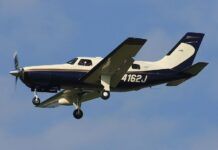
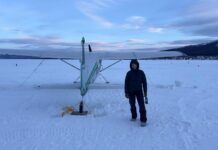

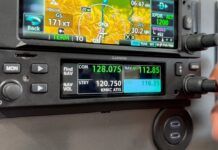
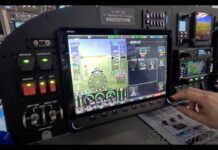







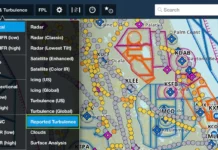


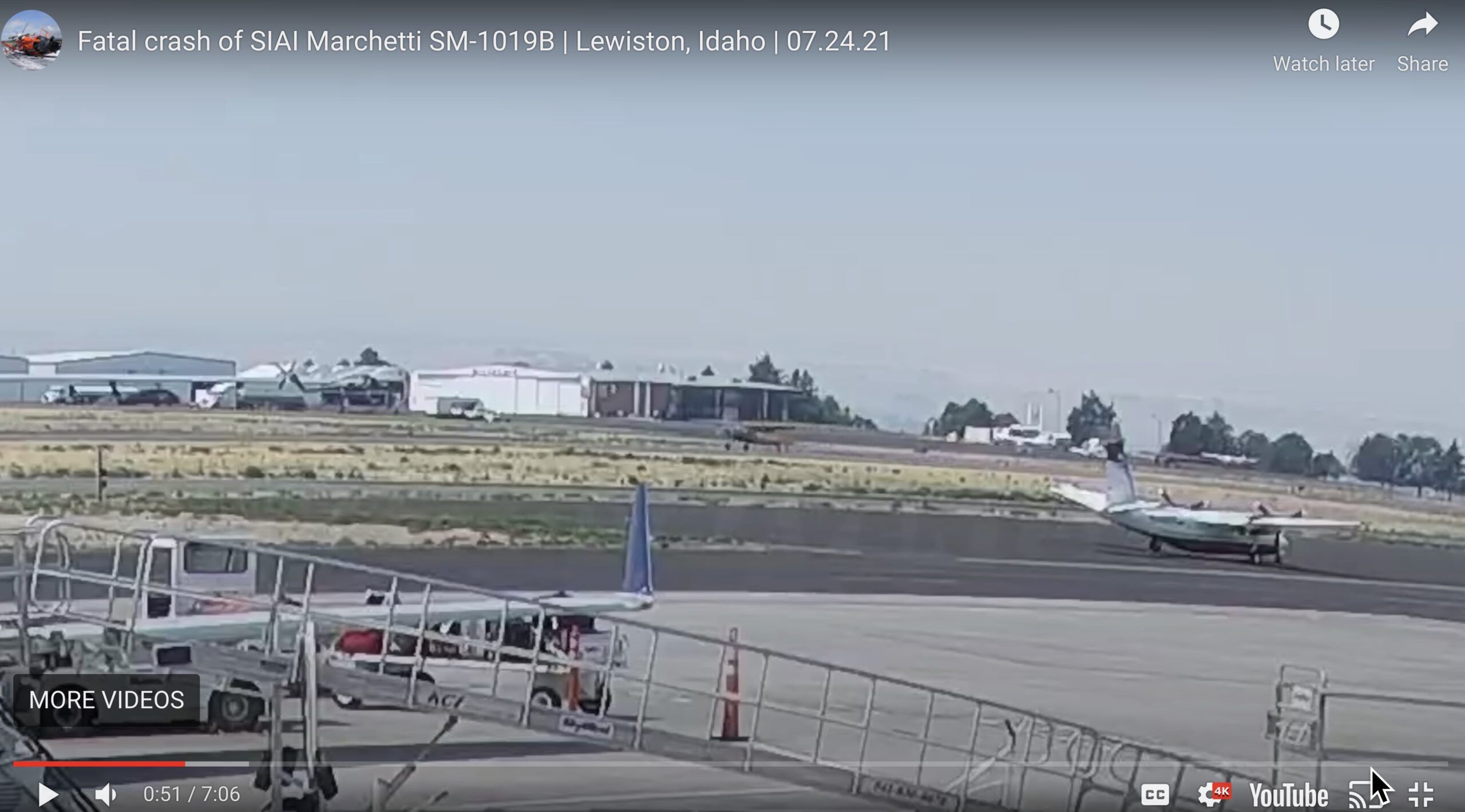
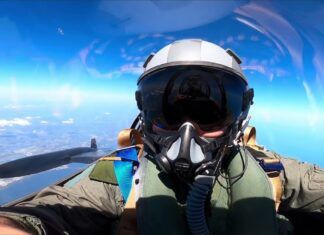
Most pilots understand the unforgiving and sometimes brutal danger involved in flying, but many seem not to. I occasionally hear pilots say that flying is safer than driving. Professional pilots–like Captain Snodgrass was–know how dangerous such attitudes are. Arguments against making videos like this available online mostly center on the horror and sadness family and friends will experience every time they might see it, and/or the inevitable armchair quarterbacking of people who don’t have the expertise, common sense, or humanity to do it properly. My heart goes out to the family and friends of Captain Snodgrass, but having this video available online will probably save some lives. I know my wife and family would be horrified if I were to perish in a video recorded plane crash. I also know that they know how hard I try to do things by the book, and that I would have no qualms about my fellow pilots watching a recording of such a tragedy if there was a chance they might learn something from it. I don’t have much in common with Captain Snodgrass other than we were both pilots, but I like to believe he would have felt the same.
I agree, tough on family and friends no doubt. I also believe that lives are saved by airing such videos and the resulting dialogue.
I watched the video in slow motion. From what I can see the elevator never moves from the neutral position. At the risk of getting ahead of the NTSB it does strongly suggest the elevator was locked. Whether this was due to the control lock remaining in place or other reason will be determined.
Bottom line is if it can happen to someone as talented as Captain Snodgrass, it can happen to you. Your defence is a careful pretakeoff check
door carefully and completely every time. Would this have saved Captain Snodgrass, I don’t know, but I do have personal knowledge of several GA accidents where failure to do the pretakeoff check correctly, or at all, contributed to a sad outcome.
These videos will do no good. These “reminders” of how dangerous inattention can be cannot help those who are inattentive (nor can they help the attentive).
All they can do is give you a slightly better illustration of what we already have in print; nothing more.
Modern media, and in the case, AvWeb should be having an internal debate. That debate shows that AvWeb has a sense of accountability to the viewer, the family/friends involved in the accident, and the value these videos may or may not add to aviation safety. That debate is re-assuring to me regarding the overall integrity of the staff of Avweb. Nice to see this blog discussing the internal wrestling match between the reality of modern media with a dialogue that includes being sensitive to everyone involved feelings and emotions. That debate proves or validates not every video should be published in the name of aviation safety. Some should be. However, some should not. Making that determination takes an internal company debate which includes one’s own personal feelings and emotions. Making that determination takes a lot of soul searching and exchange of feelings between oneself as well as staff members…who also have to sift their own personal position’s through the same filters. I can imagine, those discussions are not always easy nor cut and dried, or black and white.
This video of “Snort’s” final moments is haunting. For me, I have never heard before a combination of helplessness, frustration, and anger. The hearing combined with the video is what really rattles my cage. I was attached to VT-23 NAS Kingsville in the 80’s maintaining T2C Buckeyes. I was also back seat qualified and regularly flew to the ship experiencing many traps and cat shots. I can relate to some degree the difficulty of landing an airplane on a pitching deck in less than ideal weather conditions. On several occasions, Captain Snodgrass demonstrated a fleet squadron Tomcat to help motivate and keep the testosterone high of our soon to be, newly minted Naval Aviators. I saw on numerous occasions, “Snort” executing short field, high performance takeoffs, going to vertical, and breaking the speed of sound going straight up. No factory demo airplanes. He was flying fleet scarred airplanes. Yeah, it was really motivating, and awe inspiring to think a couple of guys were in the pointy end of this airplane, flying it with absolute precision. The crash video was the opposite end of the spectrum for me emotionally and deeply troubling.
I can only imagine the affects on friends and family. Thanks for letting us know, AvWeb indeed thinks about the potential ramifications taking into consideration many factors including the emotional ones. Not an easy nor enviable task. Follow your collective intuitions. They have served you as well as us well. This is not a one size fits all discussion nor decisions. Thank you for saying what was and is on your mind, Paul.
Showing the videos as a lesson learned is good. There are ways to show it: full video, still shots, partial video until moment of impact etc. Editorially you can have your cake and eat it too.
I personally don’t want to see the hard to watch parts, my imagination can pick up the rest for example if you show up to the moment of impact. I still get the message and it’s real enough for me.
Watching the Bonanza doorbell camera to impact was not necessary and just adds to the sadness
If the voyeurs want to see the full video I’m sure they won’t have trouble doing so.
I get the sense that many AvWeb readers will concur on this approach. But I may be wrong.
I’ll watch the video here or somewhere else. I want to learn as much as possible from accident videos and reports. Im good with whatever AVweb decides to do. They aren’t the only place on the web to view videos.
I’m also a big supporter of showing the entire unedited video. The crash truck deployment was dismal (response time is something else) Obviously some additional operator training is needed based on the video.
Thank you for AVweb’s serious approach to publishing these videos. Responding to your statement that “most [publishers] rush to be first because they know, as we do, that being first snags the search engine and drives the most views that are the digital equivalent of crack cocaine,” my advice would be to continue not letting being first with click bait drive AVweb’s motivation. Whether it is video or not, my experience is that AVweb has few scoops, but scoops are not what matters. What matters is serious factual coverage that shares AVweb’s discovery of the truth which then motivates readers to decide what to do with the truth. So when I see a story first from some other source, I look for AVweb’s coverage, not to determine if AVweb scooped it but to begin serious processing of the story. That is a reputation AVweb has earned and it is AVweb’s to preserve.
Thanks for the kind words. Much appreciated.
John,
Thanks for your excellent post.
Building on your thoughtful post I believe that to ignore, bury, kick the can down the NTSB tileline, or fail to immediately discuss WITH ALL AVAIBLE GORY DETAILS AT HAND does a serious disservice to the pilot and passengers who perished or perhaps survived with injuries. I’ve found that informed discussions of accidents is gift of great value offered to us by the victims of every accident. Our failure to respect that gift and learn as much as we can from and about it dishonors them. I too appreciate AvWeb’s sensitivity to how family and friends feel as they process the acute pain of loss. However, for most benefit to the living we need to begin discussions, including speculating about possible contributing factors! soon after the event and continue as more information emerges. I think AvWeb and others should post raw video and allow unfettered discussion. I have personally learned significant lessons from early conversations of horrific accidents, such as the Galloping Ghost disaster in Reno a few years ago, a misrigged PA 44 that crashed in the Spokane River near my home airport, and another PA 44 misfueled with Jet-A. That hoary old advice to “learn from the misfortunes of others” rather than committing those fatal errors ourselves is critically relevant to aviation.
John – I agree. I know when I read a news story on AvWeb I’ll get the best available information on a particular subject, event, etc and updates if necessary as the story progresses.
So much can be learned from a video like the one referenced here. I believe most AvWeb readers (and viewers) take away some level of usefulness from seeing visual evidence of what happens to an airplane operating near or past the bad edges of controllable flight. I’m glad AvWeb chose to post the entire video. Let the other websites and their users exploit the sensationalism, that’s not what is happening here, even though the content is identical.
Another great post, Paul. However, one nit to pick. John Lehman was Secretary of the Navy (’81 – ’87), not SECDEF.
Not a nitpick at all, but an error on my part. Now fixed. Thanks or the point out.
As difficult as this is to watch no telling how many future accidents will be prevented by watching it ? As a DPE after a private pilot Checkride I’d have the applicant watch a video of a FedEx MD11 landing crash which the crew didn’t survive. The takeaway was they has two opportunities to go around and that would have prevented the crash.
Unfortunately the public needs to see what really happens when you screw up. I don’t think this goes far enough. The people need to see the grieving family and the head stones in the grave yards. Maybe even the clean up of body parts from the scene?
That is my first thought. Teach the lesson, an aircraft crash is a very messy way to die.
Then I wonder about desensitization… is it good or bad? Paul mentioned watching the Russian car crash videos. I have watched them out of curiosity, thinking wow, it is dangerous to drive there. It likely is no less dangerous than here in America.
How will the public view aviation if all they see is crashes? Crashes seem to occur all the time if you watch YouTube. There are also constant emergencies on commercial flights being exposed. The public never saw those before. There has been a rush to get pilots out of the loop and let the computers fly… now we see how often a pilot does need to take action where a computer would crash.
The information is out there. Will the horrifying accidents move a pilot to be safer? Or will it desensitize them to the messy outcome of a deadly crash?
Have the Russian car crash videos made Russian car travel safer? They videos were put in cars there because of rampant insurance fraud. It appears that has been curbed.
Time will only tell now. The videos are here to stay.
Another aspect related to excessive nose-up pitch on take off, particularly with Cessna aircraft: when the controls are checked for full and free movement it’s a good idea to check the seat is locked. It’s horribly disconcerting when the seat slides back on take off.
Showing the entire video brings home that no one is immune from making a mistake. In this case if it is a control lock issue it brings home that you must use checklists no matter what the plane is. I have had my F35 for nearly 30 years. The check list is dog eared and tired but I use it each time I fly. Someone ask me why don’t I memorize it? I responded that by using it I won’t forget anything. Also I wonder why a control lock would hold up elevator for a tailwheel plane? Sitting still with the wind blowing from behind you want down elevator to keep the tail on the ground. Also if you take off with it locked the plane won’t fly which in my mind is a safety feature.
If a fatality is involved, I just don’t watch the video. However, lots of benefits from us discussing, hindsight guessing, speculating on the cause. Even WAGs still get your brain thinking about all the possibilities to consider in similar circumstances.
A generally accepted job description of a journalist; “to gather information, write news pieces, and present the news in an honest and balanced manner”. AvWeb does a very good job in the field we are all interested in and it is only human to be averse to showing the demise of someone you have a personal connection with. However, your job is to depict the event in the most factual way using whatever media is available. It is true that video sources have expanded exponentially in recent years making more of this kind of media available. One reason AvWeb is so good is because you are looking inside yourself and asking tough questions about your coverage. I believe the best course now and in the future is to show what you have (with a disclaimer for the kids) and if you need to recuse yourself for personal reasons, do that as well.
An earlier comment I read faulted the people in the video for not going to the pilot’s aid. That would be heroic and admirable, but I can’t fault them for not doing so. I refer you to a crash that I was involved in. On YouTube, search “Plane Crash at Boone, NC”. Sort past the talking heads to the one that starts with two fire fighters spraying water on the plane.
Given a choice between an onboard fire and a loss of flight controls, I’d take the fire any day (although fires can ultimately lead to a loss of flight controls).
One lesson not discussed so far are techniques for loss of a flight control. The loss of the elevator (nose up) requires the reduction of power, as Bertorelli points out, and rolling the airplane almost 90 degrees to bring the nose back to the horizon. Judicious use of power and trim (if effective) turns a potentially fatal situation into something that may be survivable. Unfortunately Snort had neither the time, nor the altitude, to use this technique.
I have read elsewhere that the control lock on that particular model airplane not only locks the control surfaces but it also locks the rudder pedals and applies the brakes. Can’t taxi with it on.
I wasn’t going to weigh in on this Paul, but it seems I have a somewhat different viewpoint.
My father died in exactly the same way, back in 1977. He was a good pilot, but no Dale Snodgrass. For better or worse, there was no video of Dad’s accident for analysis by thoughtful aviation experts or to titillate the prurient.
Almost exactly three years to the day of this accident, I lost two dear friends in exactly the same way. There was security cam video which immediately went viral.
The metric AvWeb should adopt regarding publishing such video/images must reflect the probative value it offers its audience. The accident investigators will already have access to it (and the wreckage) for their expert analysis. Their conclusions will be far more valuable than the snap speculations of amateurs viewing the event from a distance.
From both crash videos, the only reasonable conclusion is that the occupants died on impact. The probative value to the viewer is, “Don’t enter a stall/spin from low altitude.” So we facilely remind each other to follow our checklists.
Every other conclusion is merely speculative inference based on an inadequate visual record. Most of the armchair analysts seem to have concluded that the pilot failed to remove a control lock. It could also have been a mechanical failure, an unsecured item jamming the controls, or sudden incapacitation. My friends died due to seat slippage. My father tried to climb over power lines on departure from a short strip on a hot, humid day in August.
Given the myriad ways to experience a departure stall, I see no probative value in the video whatsoever. It would have been perfectly accurate and sufficient to say, “Dale “Snort” Snodgrass died in a departure stall accident on July 24 at the Lewiston, ID airport. The AvWeb community mourns his loss.” The video adds nothing factual to that statement.
As for myself, my engine won’t start with the control lock in place.
Very sorry for your loss. Obviously this topic hits a lot closer to home for you than most. Thank you for sharing. I will say that this accident (IMHO) is much more than a “departure stall accident”. Yes, the airplane stalled on departure but the video and associated audio clearly point to a flight control issue of some sort that if nothing else serves as a vivid visual reminder as to why takeoff trim and free and correct flight control checks are mandatory before any take off.
The initial inquiry of the article is whether or not graphic depiction video of accidents should or should not be posted. Viewers, just as readers of a preliminary NTSB report will draw conclusions which may or may not agree with a final analysis of a meticulous investigation, which is irrelevant to the original question.
The more direct question is should the video be censored or not? Interesting how those who are inclined to not favor such detailed video are mostly also inclined to not permit others the choice. Our western culture of openness is being conditioned, I.e. brainwashed to not face reality if it might be uncomfortably vivid or offen
The choice to view should be left to each individual.
Whether the video should be censored may be the “more direct question” Shadetree, but it’s a strawman argument for at least three reasons:
1. Power to limit rights to a video nominally lies with its owner.
2. Power to limit the viewing of a video nominally lies with the owner of the medium.
3. There is precious little evidence that anything can be “censored” in the US once it reaches the Internet.
AvWeb could not “censor” the Snodgrass video even if it desperately wanted to, for all of the above reasons. Paul was asking the much more nuanced question, “Should we publish it?”. Your assertion of a non-existent “right to view” has no bearing on his question.
Given the global dissemination of that video by the time the AvWeb article was posted, Paul wanted to know if it was appropriate for AvWeb to post it as well. His personal relationship with the victim gave him a different appreciation of the “if it bleeds, it leads” maxim in journalism.
I think that decision should hinge on whether the exposure serves a higher andragogical purpose than simply snagging purile eyeballs.
In this case, the video offered nothing more enlightening than yet-another tragic example of the hazard of a departure stall/spin.
“Strawman argument”, pfff. There was no mention of right to post or or not. Nor was there any suggestion or otherwise of “right to view”. You’re attempting to conflate with a topic that was neither implied or asserted.
Whether or not viewers garner any perceived conclusions or benefit about what may have caused are instructive is evident by numerous comments above. Additionally it has prompted questions about several possibilities other than a simplistic departure “stall spin”.
To say “whether the exposure serves a higher andragogical purpose than simply snagging purile eyeballs.” reflects a snide contempt for those you disagree.
Whether the video should be censored or not, is whether AVweb should self censor graphic video. I, as others have stated appreciate the forthright reporting AVweb adheres to.
I’ve watched the video many times. He is “behind the airplane,” or “ahead” of it, whichever way you wanna say it. He incorrectly replies to ground control when given his taxi clearance that he thinks he’s cleared for takeoff. Then when he’s cleared for takeoff, he’s not on tower freq, and changes to that while on takeoff roll–if a student pilot did this, or a student pilot on a checkride? Immediate correction by the CFI or DPE, right?
Yes yes, he’s a pilot guru, F-14 god and all, but listening to his incorrect radio calls makes it seem like he’s rushed, distracted, complacent, RIP.